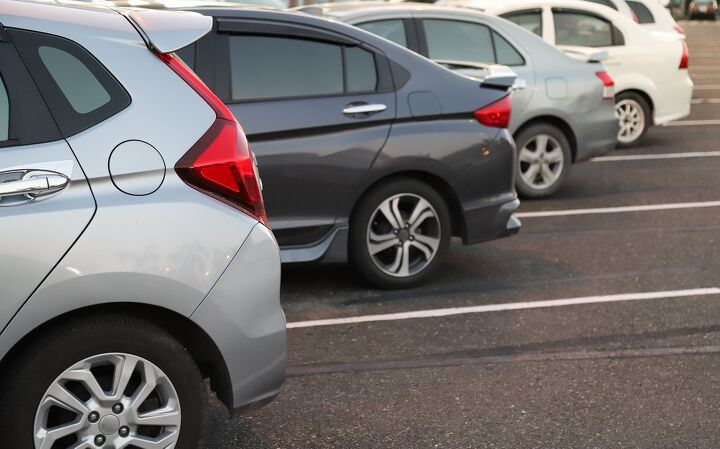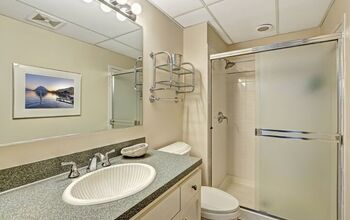What Is Tandem Parking And How Does It Work? (Find Out Now!)

Living in an apartment complex can present certain problems you don’t recognize right away. For instance, have you considered where you’ll be parking your car? Many apartment complexes provide assigned tandem parking, but what is tandem parking and how does it work?
Tandem parking is when two cars share one large parking space in which they park one behind the other. This means the car in the back needs to bak out if the car in front needs to move. You typically find tandem parking in apartment and townhouse complexes. But you can also have tandem parking in a garage.
When using this kind of parking space, the two people assigned to the spot literally must work in tandem to use the parking space properly. Using tandem parking may be among the terms you’ll have to agree to before you can stay in a particular apartment. Find out more about tandem parking and see if it works for you by reading on.
Understanding Tandem Parking
Some apartment complexes may provide a lot or a structure that can house their tenants’ vehicles, but many others do not. The most you may be given is a tandem parking spot. Using that tandem parking spot will be crucial if you’re planning to stay in that apartment complex long-term.
Most of the time, working in tandem is a phrase that has positive connotations. Working in tandem means cooperating with another person to complete a singular goal. It’s all about teamwork and unity.
Tandem parking bucks that trend though because it’s typically not something most people are fond of. In tandem parking, two cars are assigned to one parking space.
To accommodate the two vehicles, the parking space is made bigger. The catch though is that there’s not a lot of room for maneuvering around inside the parking space. Most tandem parking spaces even require the two vehicles to be arranged in an orderly line.
Here is where the tandem aspect comes in. If you’re the first person to use the space, you will be blocked in once the other person parks their vehicle. You won’t be able to get out until the other car moves first. Essentially, you must work in tandem with the person you’re sharing the spot with. Failing to do so can lead to headaches for both of you.
What Are The Different Types Of Tandem Parking Spaces?
There are three primary types of tandem parking spaces typically offered. Let’s discuss them in greater detail below.
Tandem Parking Pads
The first type of tandem parking space is also the most common and it is known as a tandem parking pad.
It looks like a normal parking space at first, but upon closer inspection, you’ll see that it’s longer. These parking spaces aren’t wider than the typical spots though and that can make them tougher to use.
Tandem Parking Garages
Next up are the tandem parking garages. They effectively function the same way as tandem parking pads except there’s a garage available now. It’s nice to have the garage especially if you live somewhere known for harsh weather.
Combination Parking Garage and Parking Pad
The last type of space combines the first two options we mentioned above. In this combo setup, the garage is usually in front of the parking pad.
The first car goes into the garage while the other remains exposed while it’s parked. The issue with this kind of arrangement is that it can create competition between the users of the parking space. You will have to discuss things beforehand to avoid any hard feelings over which car is inside the garage.
Why Do People Use Tandem Parking?
It’s easy to see how disagreements can bubble up due to a shared parking setup. So, why is it even implemented? The answer is related to utilizing space and financial matters.
Imagine for a moment that you’re living in an apartment complex that’s already full to capacity. Giving each tenant their own parking spot may not be realistic. The space available may be limited and so the developers decide to implement tandem parking in order to accommodate everyone.
Going with tandem parking can also be a money-making tactic for apartment developers. Since these parking lots don’t use as much space as their traditional counterparts, developers can do more with the available area. They can even add more apartments and make more money from the new tenants.
Some apartment developers may also opt for a tandem parking lot if they don’t have a lot of money to spare. It’s cheaper to build a smaller lot after all.
How Do You Handle A Tandem Parking Arrangement?
Getting your own parking spot is certainly preferable to a tandem parking arrangement. However, you may not have much of a say in the matter if that’s the system your apartment complex uses.
This arrangement can be a nightmare to manage in some scenarios, but there are ways to make tandem parking work. Listed below are some tips worth trying if you’re stuck with tandem parking at your current place.
Share An Apartment With Someone You Know
Probably the best way to handle a shared parking arrangement is to share it with someone you know. Many landlords will assign tandem parking spots to specific units. That means the two people in the same apartment will have to share the same parking slot.
It’s easier to share the spot if your roommate is a friend or your significant other. You won’t have to worry about inconveniencing a stranger anymore.
If it’s your partner or spouse, you could also consider both of you using each car equally. This way, it doesn’t matter what car ends up in the front or back spot.
Communicate With Your Roommate
Perhaps you already have an assigned roommate at your apartment complex. In that case, you have to make the best out of your current situation.
Strike up a conversation with your roommate and discuss how the two of you should handle the tandem parking arrangement. Hopefully, they’ll be willing to have that conversation with you.
While discussing the matter with your roommate, the two of you can discuss your schedules. Talk about when you usually leave and get home and ask about their routine too.
Opening up the lines of communication will allow the two of you to figure out a more workable setup. You can even ask for their contact details so you can get your car out in case of an emergency. Obviously, you should give them your contact details too for the exact same reason.
Pay To Use The Preferable Spot More
If you have the money to spare, you could try to purchase the better spot from your roommate (which would be the one in back). Create the kind of parking setup you want and then propose it to your roommate along with a payment offer.
Your roommate could decline the offer, but if they agree, then parking becomes less of an issue. Just make sure you tell the landlord about your deal as well. That will prevent your roommate from going behind your back and telling the landlord that you’ve been hogging the spot.
Create And Stick To A Rotation
One more option is to create a strict rotation. Perhaps you and your roommate can swap spots daily, weekly, or even monthly and see how that works out.
The problem with sticking to a rotation is that someone is likely to be unhappy with it at some point. It’s not ideal, but it could be your only option if you and your roommate cannot agree to a different arrangement.
Make Spare Keys
If you trust the person you share the spot with, make each other spare keys. This way if the person in front needs to get out of the spot and can’t reach the other person, there isn’t an issue. This is also handy in case of any emergencies that might pop up.
Related Questions
What are alternatives to using tandem parking?
We don’t blame you for developing a dislike for tandem parking. It’s definitely not the kind of setup that works for everyone.But what can you do if you’d rather not deal with the hassles of this type of parking? Are there actual alternatives for you to consider? Thankfully, other options are indeed available. For instance, you can park out on the street. This is risky because a burglar could target your car. Park in the wrong spot and your vehicle could be towed away as well.Before you park on the street, we recommend researching the area first. See if it’s a relatively safe neighborhood and read up on local ordinances too. That little bit of research can save you from waking up without a car.If you don’t feel safe leaving your car out on the street, you could look for parking garages in your area. Parking garages will reserve you a secure spot in exchange for a fee. Many parking garages offer long-term deals too so you can save some money that way.Understandably, a lot of people don’t like paying for parking so this option may not appeal to you. There are certain scenarios where it’s your only option, however.
What is stacked parking?
Some apartment complexes may utilize stacked parking instead of tandem parking. The goal behind both of these is the same and that’s to save space. They go about saving space in different ways though.When it comes to stacked parking, the cars are placed on top of one another. A special structure is used to lift one vehicle directly on top of the other. Attendants are also hired to manage the stacked parking spaces.It’s hard to say stacked parking is superior to tandem parking because it still has issues of its own. Namely, if your car is the one positioned above, you cannot use it until the one below is moved. Still, it’s good to know more about stacked parking so you can decide if you’re okay with it.
What is a three-car tandem garage?
From the outside, a three-car tandem garage looks very much like a typical two-car garage. However, there is a longer space on one side in which two cars can park one behind the other.So, you have two cars parked next to each other like in a traditional two-car garage, and a third car parked behind one of these vehicles.

Gary Evans is passionate about home improvement. He loves finding out how to make improvements in the easiest, most practical, and most affordable ways. Upgrading his home kitchen is one of his ongoing hobbies. Gary is also a long-time content creator and enjoys spending his free time tending to his hydroponic vegetable garden.
More by Gary Evans
















![Cost To Drill A Well [Pricing Per Foot & Cost By State]](https://cdn-fastly.upgradedhome.com/media/2023/07/31/9074980/cost-to-drill-a-well-pricing-per-foot-cost-by-state.jpg?size=350x220)










